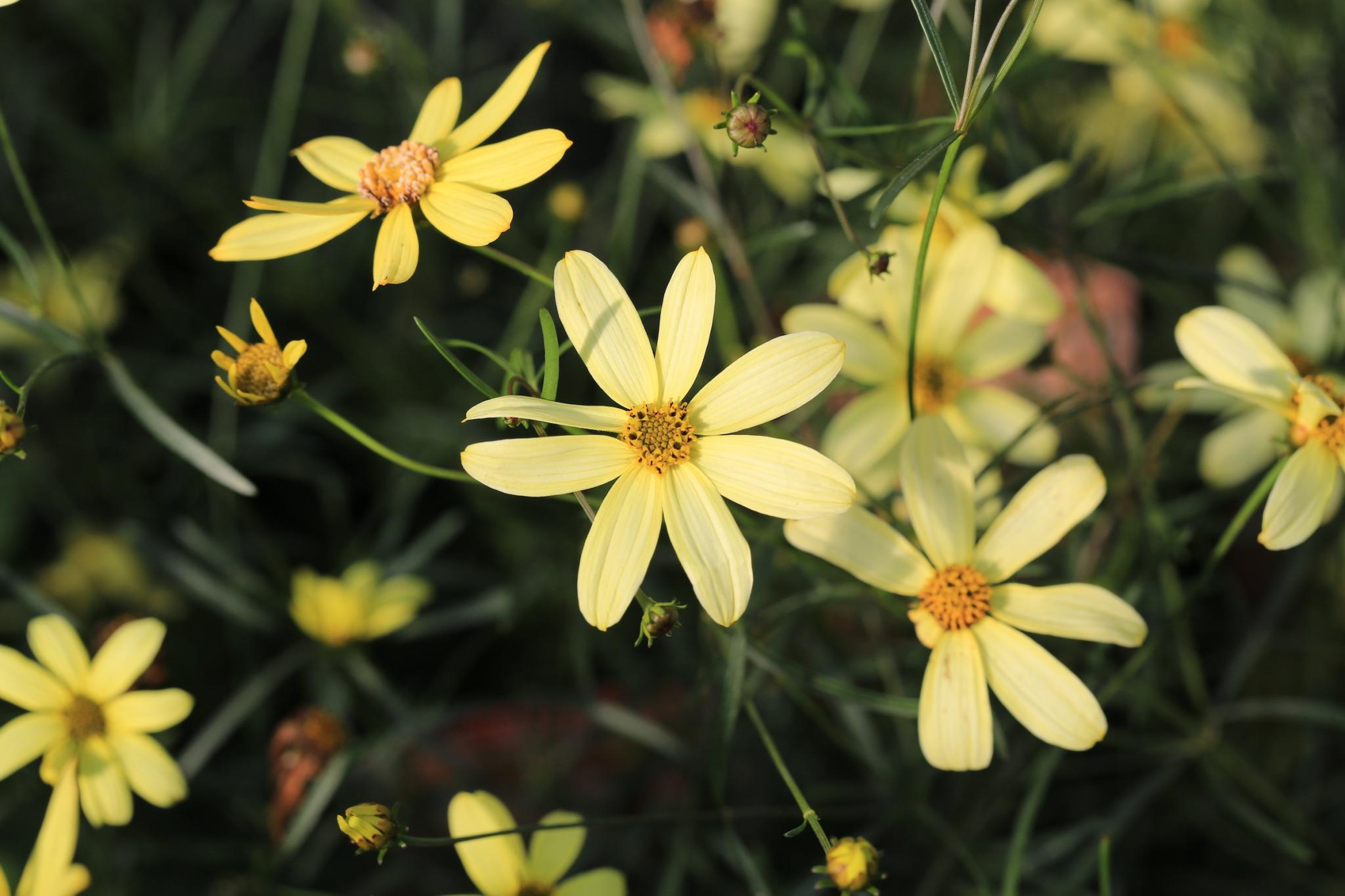The coreopsis flower (tickseed) is a long-blooming perennial that flowers from early summer until fall frost. Planted in fall or spring, this deer-resistant native is beloved by bees and butterflies. Here’s how to plant this fan favorite—as well as deadhead coreopsis and other growing tips.
About Coreopsis (Tickseed)
The name “coreopsis” stems from the Greek koris, for “bedbug,” and opis, meaning “resembling,” because the seeds look like little bedbugs. The common name is tickseed, which comes from the seeds’ resemblance to ticks.
Coreopsis is usually planted as a perennial which spreads with rhizomatous roots. However, there are annual types, too, that tend to be short-lived, and self-sow. The annual varieties are often included in wildflower seed mixes. Some hybrids put energy into making colorful blooms (but set few seeds).
The daisy-like yellow, red, orange, pink, and violet flowers bloom from summer to fall. Even as other summer flowers fade in the fall, coreopsis is often still strong. Countless small blooms sit atop thin, branching stems, making coreopsis suitable for planting in a number of areas. Not only do bees and butterflies love its nectar, but also small birds, such as goldfinches, love its seeds.
This low-maintenance plant makes few demands. It tolerates heat, humidity, and drought, and when cut, adds cheer to a bouquet. Plant in masses for striking visual effects. It is well suited to beds, borders, and containers.














